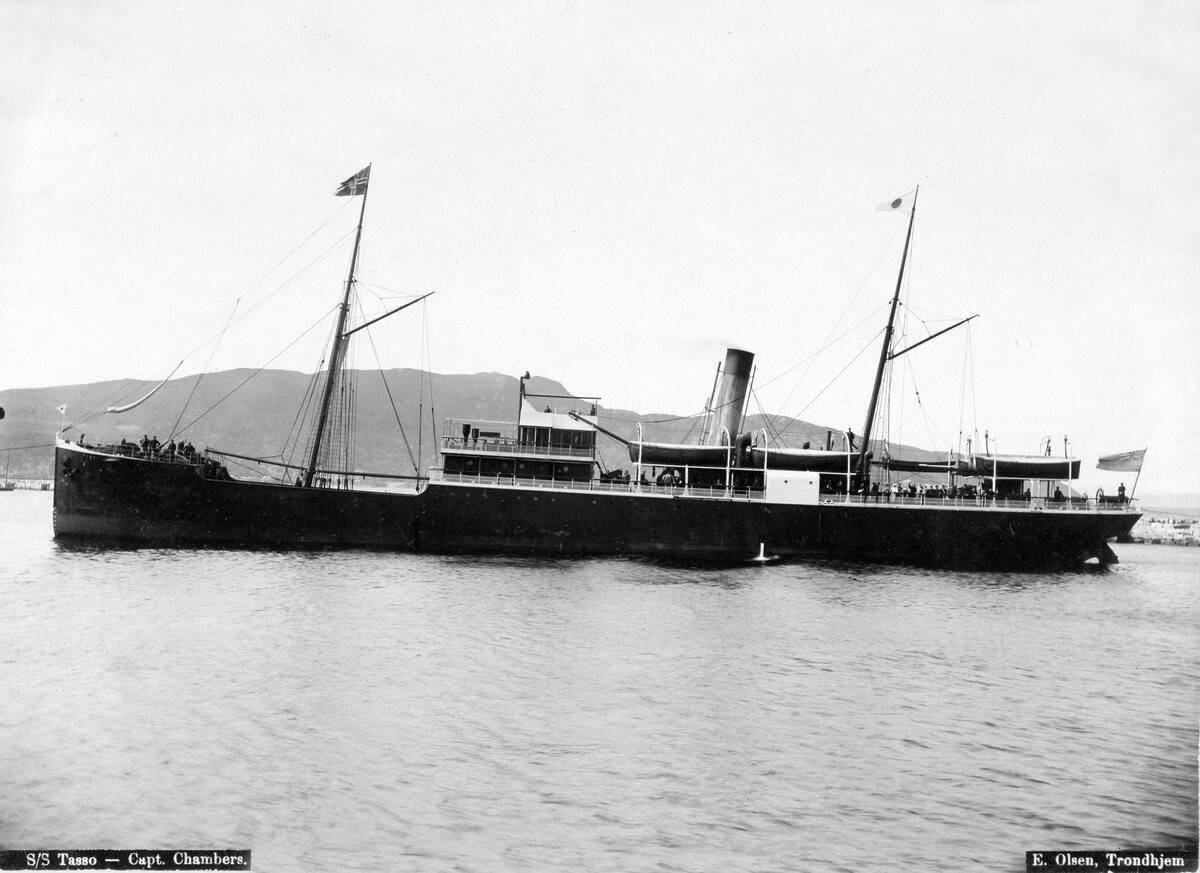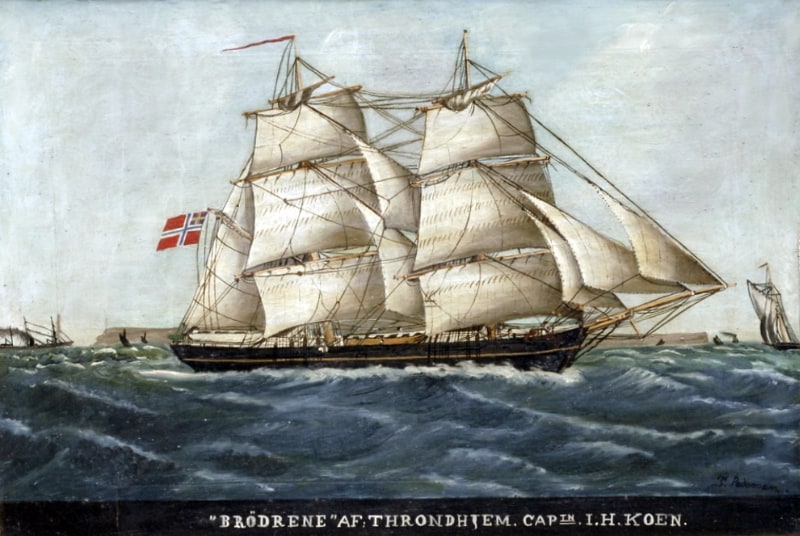
In the decades before the American Civil War and also the first few years after the war, most Norwegian emigrants chose to buy a ticket on a Norwegian sailing ship that brought passengers directly from a Norwegian port to America. After the Civil War, Quebec in Canada replaced New York City as the main port for Norwegian emigrants. The emigrants traveled further west and into the American Midwest from Quebec through Detroit.
The painting above is by P. Pedersen and owned by Sverresborg Trøndelag Folkemuseum. The brig Brødrene left Trondheim for Quebec or Gaspe at least 5 times in the years 1858 to 1862. “Brødrene” (“The brothers”) was built in 1865 by the brothers Jessen and Johan Henrik Koa. Jessen Koa was a tradesman and had a store at Bakklandet in Trondheim. The ship had a burden of 125 Norwegian Commercial lasts. Johan Henrik Koa was the master of the ship. Courtesy Norwegian Heritage.
Travel patterns also changed after 1870. The large transatlantic steamship companies which sailed from British ports offered a faster and cheaper journey across the Atlantic. It took less than half the time to cross the Atlantic with a steamship compared to a sailing ship.
Steamships reduced the risks involved in crossing the Atlantic
The number of deaths on board sailing ships was high. Most passengers didn’t know that; after all, they only traveled once. As shipping companies began to compete fiercely for passengers in the emigrant trade, prices fell significantly. On board steamships, passengers were less exposed to seasickness, disease and death. Emigrants may not have understood the risk to their lives and health they were exposed to on Norwegian sailing ships, but they had no trouble understanding cheaper prices, better conditions on board, and better food. Norwegian shipowners who participated in the emigration trade for Norwegian emigrants could no longer compete. In 1868, the Norwegian Parliament also passed a law for new regulations to control the transportation of emigrants to foreign parts of the world.[1]
Steamships became dominant in the emigration trade
The transition from sailing ships to steamships in the emigration trade took about fifteen years. Around 1873, steamships dominated the emigrant trade across the Atlantic from Europe to the USA. [2] Gradually, the number of Norwegian emigrants using British ports to cross the Atlantic increased. Foreign shipping companies competed fiercely for passenger traffic across the Atlantic; shipping companies such as Allan Line, Cunard Line, American Line, National Line, Inman Line, Guion Line, Dominion Line, State Line and White Star Line established agencies in Norway.
The large shipping companies depended on smaller steamships to transport emigrants from European ports to ports in Britain. According to Nicholas J. Evans, more than 2.2 million emigrants from Denmark, Sweden, Norway, Finland, Germany and Russia passed through the port of Hull between 1836 and 1914.[3]
The Wilson Line brought Norwegian emigrants to Hull, England

The British shipping company Wilson Line had a virtual monopoly on the emigrant traffic between Scandinavia and Hull. From 1867, Wilson Line had one departure per week from Christiania to Hull. Usually, a steamship left Christiania every Friday, and the ship usually called at Kristiansand. There were countless complaints over the years about poor conditions on board and during the waiting time in Hull for those with the cheapest tickets. But most passengers only used Wilson Line once in their lives, and the company paid little attention to the complaints. The steamship route across the North Sea from Norway to Hull usually took around 52 hours.

Credits
Image of the brig Brødrene: Painter: P.Pedersen.Image Owner: Sverresborg Trøndelag Folkemuseum – Source: Digitalmuseum – License: CC BY-SA 4.0) URL: https://digitaltmuseum.no/011025371421/bilde Creative Commons Attribution-NonCommercial-NoDerivatives 4.0 International License
Image of S/S Tasso: Owner: Sverresborg Trøndelag Folkemuseum Inventarnr. FTT.TSM.0478
Notes
[1] «Om Udfærdigelse af en Lov om Kontrol med Befordring af Udvandrere til fremmede Verdensdele», Ot. Prp. No 27, 1868, Stortingsforhandlingene 1868.
[2] For a comprehensive discussion of death rates in the Transatlantic migration trade, see Raymond L. Cohn, “Mortality on Immigrant Voyages to New York, 1836-1853”, The Journal of Economic History, Vol. 44, No. 2. (June 1984), pp. 289-300; Raymond L. Cohn, “The Transition from Sail to Steam in Immigration to the United States”, The Journal of Economic History, Vol. 65, No. 2. (June 2005), pp. 469-495.
[3] Nicholas J. Evans, “Indirect Passage from Europe. Transmigration via the UK, 1836-1914, Journal of Maritime Research, Vol. 3, No. 1, 2001, pp. 70-84.
Views: 21
